February 14, 2019 - Kamenari in Boka Bay today is known primarily as the place where daily ferries take thousands of cars and passengers to the other coast of the bay. Situated along the coast of about 400 meters, the ambiance of the Kamenari is the one of very few along our coast, which enjoys the protection as a cultural landscape of exceptional characteristics. The history of this small place is vibrant with facts that could be proud and much larger communities. Famous for educated and skillful locals, the location of the first post office and first public transport in Montenegro hires a lot of interesting details of the productive life of this small place, once proud on bakeries, theatre, but first of all, stones to be thanked for its name.
Kamenari, as explained our host in this Bokelian place, the world philatelists, Mr. Tomo Katurić, was placed in half in the cadastral municipality of Josica and half in the cadastral district of Djurici. In the past, these two municipalities belonged to different administrative centres, Josica to Herceg Novi and Djurici to Perast.
The name of the place, Kamenari, is not mentioned until the middle of the 19th century, and its etymology is more than pure. Kamen is a Montenegrin word for stone, and the rock from Djurici, besides building a large part of the old towns along the Bokelian coast, also managed to take the name this place down to far America.
"Thanks to the stone from Djurici, Kamenari is famous not only in these areas but also across the Atlantic. The Djurici stone is specific to its colour and quality," explains Katuric. "A part of the United Nations building in New York was built of stone from Kamenari. Before New York, part of the pavement in the Saint Mark's church in Venice was built, and these coloured red stones decorated many other palates and churches in Venice, as well as in Zadar, Trieste, Torino and Nice."
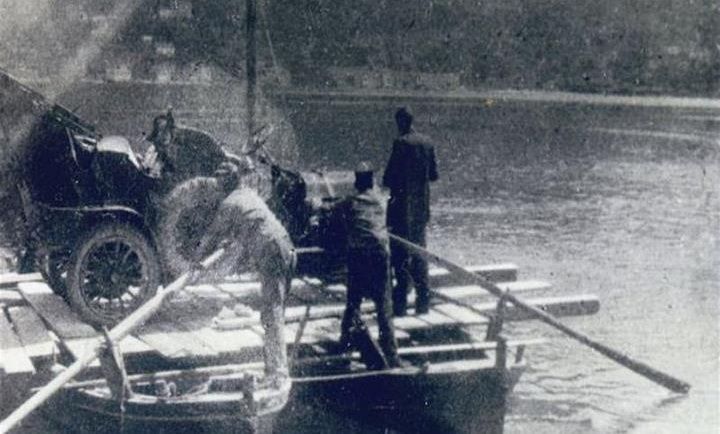
The ferry service in Kamenari started in 1901 with the families of Milosevic and Sekulovic. Djuro Milosevic was the father of the famous bacteriologist, world expert Dr. Simo Milosevic, at which Igalo Institute today carries the name.
Kamenari, today a village that we know first of all by ferry transport, was a significant traffic, commercial, service, and crafts center in Boka Bay in the 19th century.
It was in Kamenari that in 1899 the founding shareholders' assembly "Bokeljski Omnibus", the first company for road transport in Boka Bay, which, after obtaining a concession from the Austrian authorities, held the Kamenari-Herceg Novi line. "The stockholders were the distinguished citizens of Boka Bay, 33 of them. Transport was carried out at that time by horses. It is interesting that for this Omnibus, which could have received 25 people, horses from Pesta were procured and that such omnibus worked in Dubrovnik as well since 1899," explains Katuric.
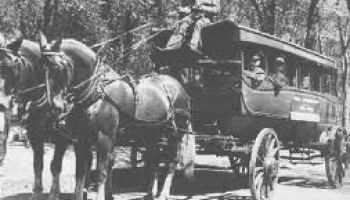
Bokeljski Omnibus, the first road transport company of Montenegro
The "Bokeljski Omnibus" and Kamenari will mark this year 120 years since its foundation, the predecessor of road transport companies, not only in Boka but also throughout Montenegro and beyond.
Like the rest of Bay Bay, and Kamenari is celebrating ecumenism as the eternal model of harmonious coexistence of peoples in this region. "In Kamenari we have five churches, two of which are Orthodox and three are Catholic. What is specific is that the Church of Saint Nedjelja was a church with two altars, where one week served a liturgy and other masses. It is an indication of the degree to which these people lived, how much they respect each other. "
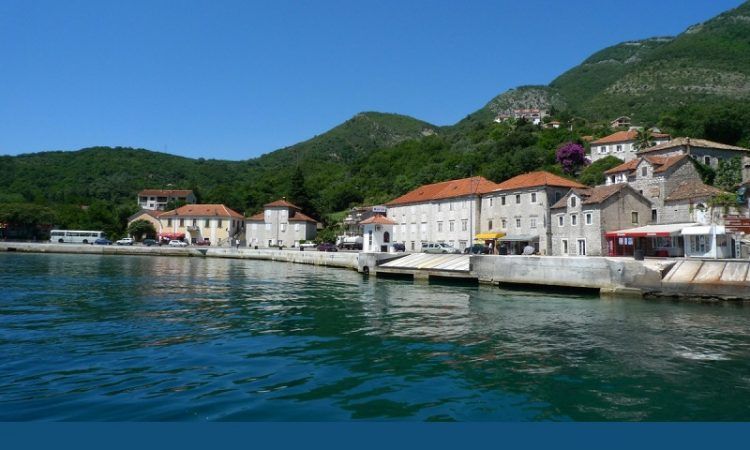
Kamenari, Copyright: radio Herceg Novi
Tomo Katuric is a world-class philatelist who can boast of as many as 15 gold medals won in world exhibitions. The most famous of the four collections owned by the family Katuric is "Postal History of Boka Bay 1809-1875".
"The post office in Boka was opened in 1804 and Cetinje 1874, four years before the Berlin Congress. At that time, until the post office was established in Montenegro, the letters from Cetinje traveled to Kotor and then to their destinations throughout Europe and the Mediterranean, and further to the world."
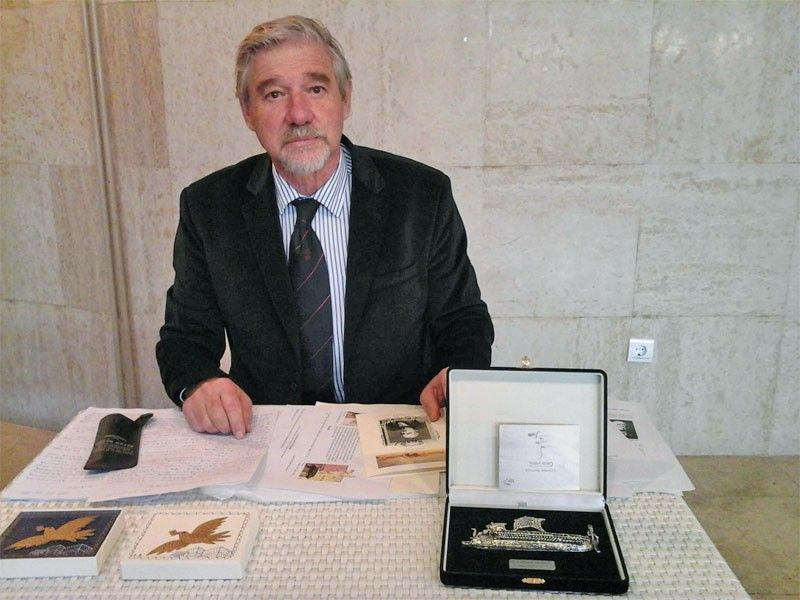
Tomo Katuric, private photo collection
Sometimes Tomo Katuric, as well as his ancestors, who lived in Boka since 1697, carried the name of Boka Bay to the world seas, engaged as a ship captain, predominantly on the ships of the former Jugooceania Kotor. Today, the name Kamenari, Herceg Novi, Boka Bay and Montenegro he reports to all meridians as one of the most admired philatelies in the world.
The Katuric House in Kamenari stands on the ferry pier itself. For this house, there are important historical facts, attested to by a memorial plaque that can be seen by all the visitors of the cafe, who have been in this house for more than a century.
"On the facade of our house, there is a memorial plaque dedicated to the Rebellion of sailors on the Austro-Hungarian fleet on February 1, 1918. It is stated in the records that on 27 and 28 January, sailors Sisgoric, Ras, Grabar, and Bernicevic raised the rebellion making the agreements and plans in this cafe. Here they could, along with the jukebox my grandpa had brought from Vienna in 1915, calmly agree on how to bring the uprising.
The rebellion broke out because of poor conditions of life and the treatment of sailors on these ships, anchored in front of the Kamenari," Katuric proudly demonstrates to us the jukebox.
The wreath of stone houses in Kamenari was built in the majority of 17-19 years, at the time of the greatest glory and power of the Boka nautical.
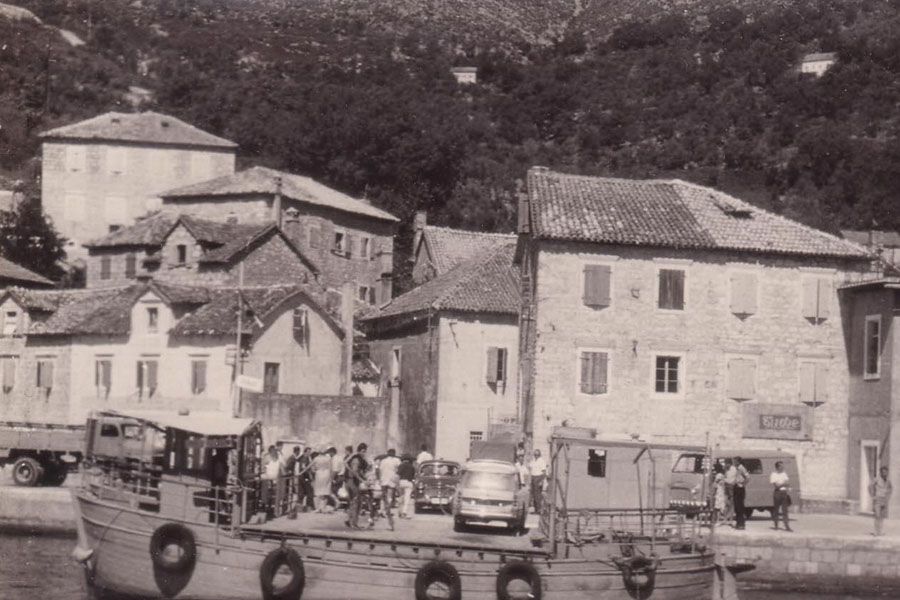
Kamenari in the past
"Thanks to maritime and distant journeys, people built beautiful stone houses. But the point was not just to bring money here and build. With money, something much more significant, more valuable, and more beautiful came, which is a world culture. That is why Boka still today, despite all the odds, at an excellent cultural level. I own an 1860 letter from sailing ship Ilirico. Out of 14 crew members, eleven signed with their full names, only three couldn't write. So it was not just the captain who was literate, but a sailor and almost all other members of the crew. And that was all people from Donja Lastva, Stoliv, Kamenari, Perast, Risan. People from our region have been mostly literate in the 19th century, " says Captain Tomo Katuric.
As far as education is concerned, Kamenari, as a small place, could boast of the largest share of highly educated residents at Boka Bay in the 20th century. Many well-known scientists, doctors, people in business and seafarers are right from this place.
"Besides already mentioned, a well-known bacteriologist, Dr Simo Milosevic, from Kamenari were also Dr Bosa Milosevic, who founded the National Front in Belgrade, as evidenced by the panel on the façade of the hospital building, and Dr Olga Milosevic, who was Tito's physician in three enemy offensives. We are talking about a woman who was the president of the Red Cross of Europe and the winner of one of the most important awards for humanity, named after Andrew Dinan, for the man who founded the Red Cross in Europe. We also had the first educated painter Spiro Djuranovic, followed by his son Mato Djuranovic, music professor and academic painter. Beside them, there was a large number of captains, professors, civil engineers here. Among them, Lazar Katuric and Lazar Mijailovic, who were the main designers for the construction of docks from Ulcinj to Split, were particularly experienced engineers. Their knowledge suggests that in the great earthquake that hit Montenegro in 1979, none of these swamps was damaged," Tomo Katuric told us.
If we talk about traffic, Kamenari is today one of the most frequented places in Boka. Only in the past year, the naval trains, a shareholding company that moved to Pro House's majority ownership in 2004, carried over 1.3 million vehicles.
The first carriers, the Milosevic and Sekulovic families, performed carriage on paddles. 1935 the family Aranzulo joins this job and acquires the ferries with the engines of the famous German company Daiz. For the resurgence of the predecessors on this coastal naval line, their successors, in the words of Tomo Katuric, little respected this place, failing even to meet their contractual obligations, which obliged them to allocate four percent of their income to the Municipality of Herceg Novi.
Kamenari is supposed to be a protected ambiance, but this regime of protection, unfortunately, is not respected.
The place has two hotels; more villas offer private accommodation, which can be an additional source of development for the area. But in recent years, in this part of Boka Bay, unacceptable interventions alter the coastal line, while the former natural beaches, small patches, replace the artificial baths that are being built on the sea. Also, the problem of excessive and inadequate urbanization is present here as well as in other parts of Boka Bay.
As long as it has been good for a long time, the ferry has also given Kamenari a position of transit, where people generally do not stay long. Still, those who decide to stay here will meet with friendly hosts who will surely offer some more exciting details about this small place. A place that, in comparison with other areas of Boka, may not have an unusually long, but has a very contentious history.
 The ferry service in Kamenari started in 1901 with the families of Milosevic and Sekulovic. Djuro Milosevic was the father of the famous bacteriologist, world expert Dr. Simo Milosevic, at which Igalo Institute today carries the name.
The ferry service in Kamenari started in 1901 with the families of Milosevic and Sekulovic. Djuro Milosevic was the father of the famous bacteriologist, world expert Dr. Simo Milosevic, at which Igalo Institute today carries the name.  Bokeljski Omnibus, the first road transport company of Montenegro
Bokeljski Omnibus, the first road transport company of Montenegro  Kamenari, Copyright: radio Herceg Novi
Kamenari, Copyright: radio Herceg Novi Tomo Katuric, private photo collection
Tomo Katuric, private photo collection  Kamenari in the past
Kamenari in the past 







